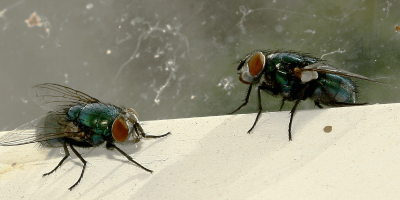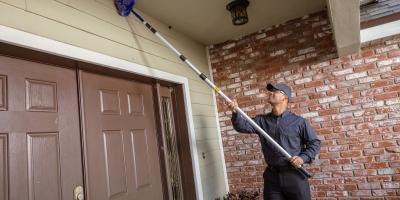Expelled: Pest Hot Spots in Schools

Often considered a petri dish for germs like colds, flus, and viruses, schools can be hotspots when it comes to common pests, too. Certain school spaces are more problematic than others, with cafeterias, gyms, and locker rooms topping the list. That’s why it’s crucial that schools and other educational facilities embrace integrated pest management (IPM) as the best way to prevent and fix pest issues.
What follows is a quick rundown of the most pest-prevalent spots in schools, along with a look at IPM and how it differs from traditional pest control.
Pests Prefer Hiding in these Hot Spots
The Environmental Protection Agency has published an in-depth look at how pests present in schools and how IPM is key to cracking down on their populations. For students, and those employed by a school district, it helps to know where pests prefer to hide in order to avoid unwanted encounters.
According to the EPA, the following are among the most popular places for pests in schools:
- Buses
- Cafeterias
- Classrooms
- Dumpsters
- Exterior entrances/exits
- Gyms
- Lockers and locker rooms
Of course, it’s not hard to understand why these places are perfect for pests. With respect to buses, the number of students traveling to and from school, each with a backpack, lunch, snacks, etc., make it easy to see the potential for attracting and transporting pest populations.
Naturally, the cafeteria is home to an abundance of food, both stored and in trash receptacles, ripe for the picking. Ditto any dumpsters located along a school’s outside perimeter, maybe even near the exterior entrances and exits listed.
When it comes to lockers and locker rooms, just think of the old papers, wadded up snack wrappers, and even dirty laundry that some students allow to accumulate in these tight, dark spaces. No wonder lockers are like breeding grounds for pests.
For these reasons alone, a comprehensive pest prevention program is crucial.
Enter IPM…
Understanding the Importance of IPM
Unlike the reactionary pest control of the past, which depended heavily on the use of pesticides, integrated pest management (IPM) takes a more preventive approach. Ultimately, this cuts down on the need for pesticide applications, which better protects the overall health of the students, staff, and school grounds.
A big part of IPM requires proactively preventing pest problems by understanding and eliminating the kind of conditions that pests prefer. This might include structural fixes like sealing up potential access points, like holes or cracks, clearing gutters of built-up debris, or fixing leaky pipes.
Implementing certain standards, regarding hygiene and sanitation, is also key. For instance, a school might determine designated spaces for food consumption, or adopt specific cleaning procedures for common areas and high-traffic destinations like the cafeteria.
At the heart of IPM, appropriately enough, is education. IPM involves extensive efforts to educate students and staff about their own behavior and responsibility regarding pest control. Understanding how and why pests are attracted to a particular place is the first step in pest prevention.
The JP Pest Services pest control professionals are proud to deliver IPM strategies for our commercial clients. Contact us to learn more about how IPM can specifically support and safeguard your school or business setting.



